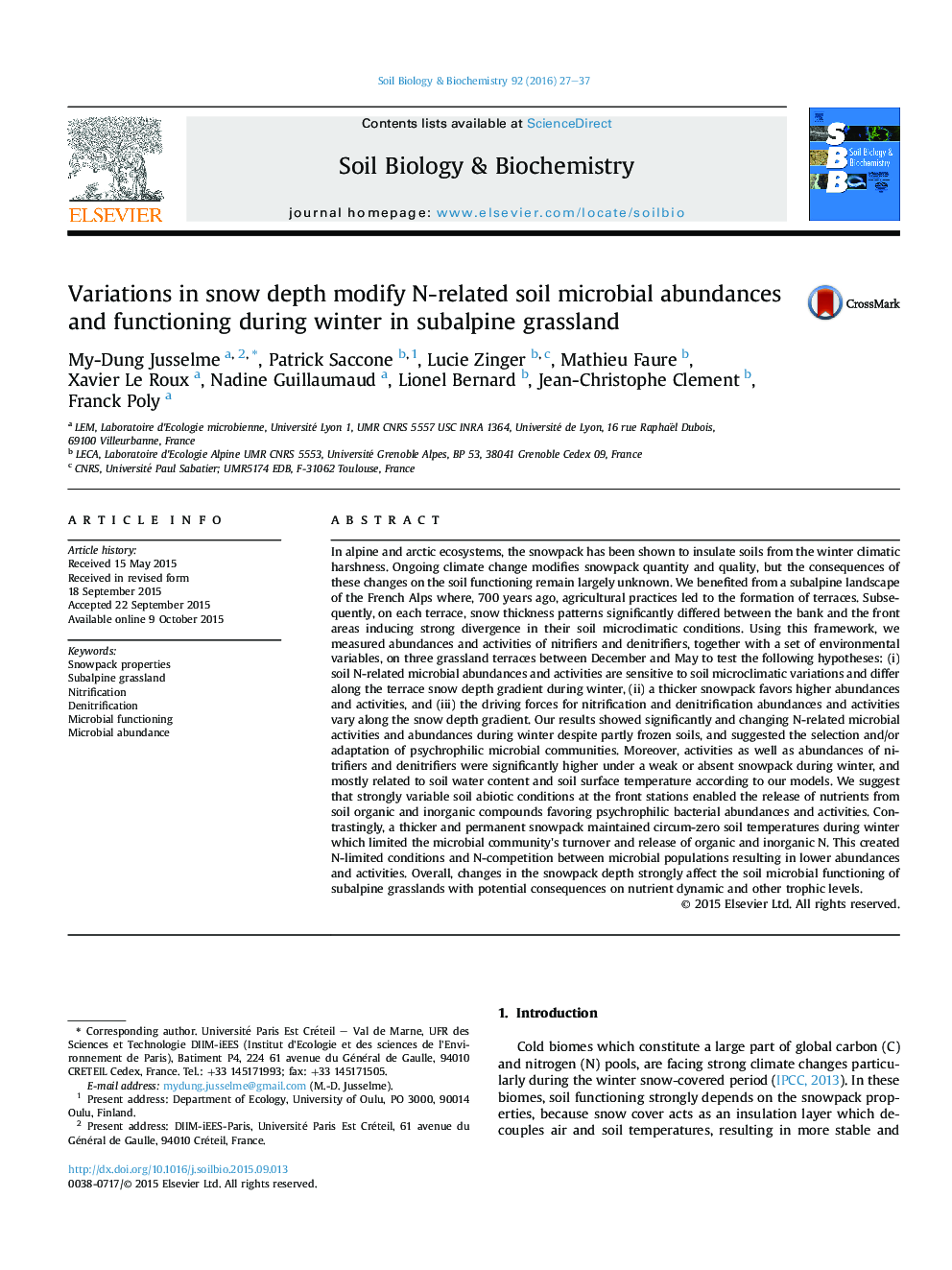| کد مقاله | کد نشریه | سال انتشار | مقاله انگلیسی | نسخه تمام متن |
|---|---|---|---|---|
| 8363638 | 1542592 | 2016 | 11 صفحه PDF | دانلود رایگان |
عنوان انگلیسی مقاله ISI
Variations in snow depth modify N-related soil microbial abundances and functioning during winter in subalpine grassland
دانلود مقاله + سفارش ترجمه
دانلود مقاله ISI انگلیسی
رایگان برای ایرانیان
کلمات کلیدی
موضوعات مرتبط
علوم زیستی و بیوفناوری
علوم کشاورزی و بیولوژیک
دانش خاک شناسی
پیش نمایش صفحه اول مقاله

چکیده انگلیسی
In alpine and arctic ecosystems, the snowpack has been shown to insulate soils from the winter climatic harshness. Ongoing climate change modifies snowpack quantity and quality, but the consequences of these changes on the soil functioning remain largely unknown. We benefited from a subalpine landscape of the French Alps where, 700 years ago, agricultural practices led to the formation of terraces. Subsequently, on each terrace, snow thickness patterns significantly differed between the bank and the front areas inducing strong divergence in their soil microclimatic conditions. Using this framework, we measured abundances and activities of nitrifiers and denitrifiers, together with a set of environmental variables, on three grassland terraces between December and May to test the following hypotheses: (i) soil N-related microbial abundances and activities are sensitive to soil microclimatic variations and differ along the terrace snow depth gradient during winter, (ii) a thicker snowpack favors higher abundances and activities, and (iii) the driving forces for nitrification and denitrification abundances and activities vary along the snow depth gradient. Our results showed significantly and changing N-related microbial activities and abundances during winter despite partly frozen soils, and suggested the selection and/or adaptation of psychrophilic microbial communities. Moreover, activities as well as abundances of nitrifiers and denitrifiers were significantly higher under a weak or absent snowpack during winter, and mostly related to soil water content and soil surface temperature according to our models. We suggest that strongly variable soil abiotic conditions at the front stations enabled the release of nutrients from soil organic and inorganic compounds favoring psychrophilic bacterial abundances and activities. Contrastingly, a thicker and permanent snowpack maintained circum-zero soil temperatures during winter which limited the microbial community's turnover and release of organic and inorganic N. This created N-limited conditions and N-competition between microbial populations resulting in lower abundances and activities. Overall, changes in the snowpack depth strongly affect the soil microbial functioning of subalpine grasslands with potential consequences on nutrient dynamic and other trophic levels.
ناشر
Database: Elsevier - ScienceDirect (ساینس دایرکت)
Journal: Soil Biology and Biochemistry - Volume 92, January 2016, Pages 27-37
Journal: Soil Biology and Biochemistry - Volume 92, January 2016, Pages 27-37
نویسندگان
My-Dung Jusselme, Patrick Saccone, Lucie Zinger, Mathieu Faure, Xavier Le Roux, Nadine Guillaumaud, Lionel Bernard, Jean-Christophe Clement, Franck Poly,